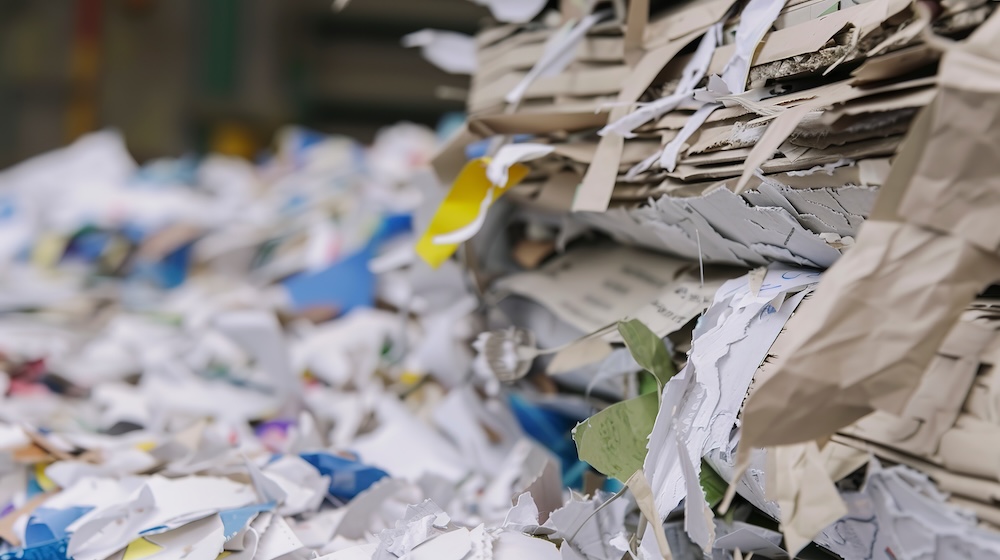Companies often overlook a surprising sustainability drain: everyday printing habits. While organizations focus on high-profile green initiatives, wasteful printing continues to quietly sabotage environmental goals and inflate operational costs.
The good news? Transforming your print environment doesn’t require massive investment or painful adjustments. In fact, optimizing your printing approach stands as one of the most accessible sustainability wins available to businesses today.
In this blog, we’ll take a look at printing practices undermining your sustainability efforts and discover practical solutions that benefit both your bottom line and environmental footprint. 
Why Printing Matters in the Sustainability Conversation
Before dismissing printing as a minor environmental concern, consider these sobering facts:
- Paper waste accounts for roughly 26% of landfill content
- The average employee prints approximately 10,000 sheets annually
- Most printed documents are viewed for less than 5 minutes before disposal
- Global paper production consumes over 4 billion trees yearly
Unlike complex sustainability challenges requiring infrastructure overhauls or technological breakthroughs, printing waste represents a problem we can solve today with relatively simple changes.

Printing Habits That Hurt Your Business
1. Print-and-Sprint Syndrome
We’ve all witnessed this scenario: a colleague prints a document, briefly glances at it, then immediately discards it. This habit treats printing as temporary visualization rather than necessary documentation.
2. The Proofread-After-Printing Problem
Printing documents before thorough proofreading leads to inevitable reprints once errors are discovered. This doubles paper usage and wastes valuable resources. When multiplied across departments, this habit creates mountains of unnecessary waste.
3. Colour Printing by Default
Full-colour printing uses substantially more ink and toner than black-and-white alternatives. While colour certainly has its place in client-facing materials and presentations, internal documents rarely require colour. Many employees print in colour simply because it’s the default setting or because they never considered the alternative. This unconscious choice drives up costs and environmental impact significantly.
4. Single-Sided Printing Practices
Using just one side of each sheet effectively doubles paper consumption instantly. For internal documents, drafts, and reference materials, single-sided printing represents an unnecessary luxury with real environmental consequences.
5. The “Just in Case” Printing Mentality
“I might need this later” thinking leads to endless paper accumulation. Employees print documents for potential future reference despite having perfect digital copies available. These just-in-case printouts typically end up forgotten in folders or drawers before eventually hitting the recycling bin without ever serving their intended purpose.
6. Orphaned Print Jobs
Nearly a third of all print jobs never find their owners. When distractions arise between clicking “print” and walking to the printer, documents often remain unclaimed. These abandoned printouts waste resources while providing zero value.
7. Desktop Printer Proliferation
Personal desktop printers encourage impulsive printing without accountability. While convenient, these devices typically consume more energy per page than shared multifunction printers, making print volume tracking nearly impossible.
Practical Solutions for Real Results

Now for the good part—practical ways to transform these sustainability drains into opportunities for improvement:
1. Leverage Default Settings to Your Advantage
Human nature works in predictable ways. Most employees don’t change printer settings between jobs—it feels like an unnecessary effort. Use this tendency to your advantage by establishing smarter defaults:
- Set black-and-white/grayscale as the standard mode
- Make duplex (double-sided) printing the universal default
- Configure draft quality for internal documents
- Establish paper-saving layouts for appropriate document types
This approach requires minimal effort while yielding significant results. By making double-sided printing the default alone, you can slash paper consumption by up to 50% overnight.
2. Adopt Resource-Efficient Fonts
Not all fonts use ink and toner equally. Switching to efficient typefaces can reduce consumption by 20-30%:
- Century Gothic uses 30% less ink and toner than Arial
- Garamond creates elegant documents while using minimal ink
- Times New Roman balances readability with efficiency
- Ecofont incorporates tiny holes in characters to reduce usage while maintaining legibility
For everyday documents, font selection offers an effortless way to extend cartridge life and reduce environmental impact without sacrificing quality.
3. Implement Pull-Printing Systems
Secure printing (also called pull-printing or follow-me printing) addresses multiple sustainability challenges simultaneously. With this approach, documents aren’t printed until the user authenticates at the device using a badge or PIN code.
This provides many benefits:
- Eliminates abandoned print jobs entirely
- Enhances document security
- Creates a natural pause for users to reconsider printing necessity
- Provides valuable data on printing patterns
- Reduces waste without limiting functionality
Organizations implementing pull-printing typically see immediate print volume reductions without any negative impact on productivity.
4. Strategically Consolidate Print Devices
While eliminating all personal printers might face resistance, thoughtful consolidation delivers substantial benefits:
- Replace most desktop printers with strategically placed multifunction devices
- Position shared printers at reasonable walking distances
- Ensure these centralized devices offer advanced efficiency features
The brief walk to a shared printer creates just enough friction to make employees consider whether they truly need physical copies. Meanwhile, modern multifunction devices typically use less energy per page while offering advanced features like scanning to email or cloud storage.
5. Embrace Document Management Systems
A document management system (DMS) transforms your approach to information:
- Create streamlined digital workflows for approvals and reviews
- Make documents easily searchable, eliminating “just in case” printing
- Enable secure electronic sharing without physical copies
- Generate compliance-friendly audit trails digitally
- Provide tools to digitize existing paper documents
A properly implemented DMS doesn’t just reduce printing—it fundamentally improves information accessibility while enhancing security and collaboration capabilities.
6. Monitor, Measure and Motivate
Visibility drives improvement. Consider implementing print monitoring software to:
- Track volumes by department and individual
- Identify specific improvement opportunities
- Establish realistic reduction targets
- Create friendly interdepartmental competitions
- Recognize sustainability achievements
Simply making printing data visible often triggers natural reductions as awareness increases. When departments see their printing footprint compared to others, behaviour changes follow.
7. Build Print Consciousness into Your Culture
Technology solutions work best when paired with cultural reinforcement:
- Provide training on digital alternatives to printing
- Make sustainability metrics visible throughout the workplace
- Ensure leadership models responsible printing behaviour
- Recognize departments that successfully reduce waste
- Frame printing reduction in meaningful environmental terms
The Business Case: Where Sustainability Meets Financial Sense
Print sustainability initiatives typically deliver rapid returns:
- A 20% reduction in printing can save mid-sized companies thousands of dollars annually
- Secure printing solutions generally pay for themselves within 6-18 months
- Document management systems improve operational efficiency while reducing costs
- Reduced paper storage needs free up valuable office space
- Digital workflows accelerate processes previously slowed by paper handling

Your Print Sustainability Roadmap: Getting Started
Ready to transform your printing approach? Here’s an action plan to help:
- Baseline Assessment: Track current printing patterns for 2-4 weeks
- Quick Win Implementation: Update default settings and font standards
- Mid-Term Strategy Development: Plan for secure printing and device consolidation
- Long-Term Transformation Planning: Evaluate document management solutions
- Employee Engagement: Communicate goals and progress regularly
Remember that incremental progress matters. You don’t need perfect execution immediately—start with the easiest improvements and build momentum.
The Bigger Picture
Optimizing printing habits delivers benefits beyond environmental impact:
- Enhanced information security through reduced paper circulation
- Improved document accessibility for remote workers
- Faster document retrieval through digital systems
- Reduced storage requirements for physical documents
- Better version control and collaboration capabilities
Small Changes, Remarkable Results
Printing habits represent one of the most overlooked yet impactful sustainability opportunities available to businesses today. Unlike many environmental initiatives requiring substantial investment or operational disruption, print optimization delivers immediate benefits while reducing costs.
By addressing these common printing habits, you’re not just saving trees—you’re creating a more efficient, cost-effective, and forward-thinking organization. The humble office printer may not seem like the centrepiece of your sustainability strategy, but it offers some of the highest-impact, lowest-effort improvements available.
About hubTGI
hubTGI is a Canadian-owned Managed Services provider that offers Print Services, Workflow Solutions, Managed IT, Cybersecurity Solutions, Cloud Services and VoIP to help their customers control costs, secure their data and make their people more productive.
For the latest industry trends and technology insights visit hubTGI’s Resources page.





